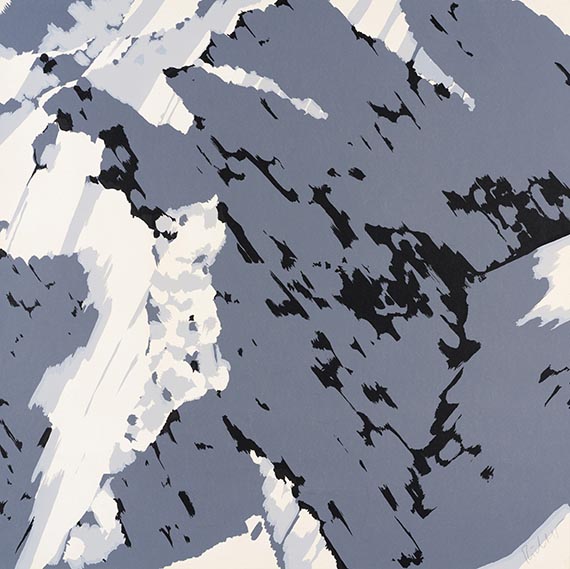
Roger Bissière
1886 Villeréal
1964 Boisierette
The painter and art critic Roger Bissière, born on September 22, 1886 in southern France, was one of the main representatives of tachisme. His works appear in many important museums of the world. Before he developed his typical informal style in the 1940s, his work showed a variety of influences.
After studying at the Académie des Beaux-Arts in Bordeaux, Bissière went to Paris in 1910. In 1912, he published his first articles of art criticism under the pseudonym of Caoudal in the weekly newspaper "L’Opinion". In the following year, Bissière participated in exhibitions time and again and published numerous articles in various magazines. They appeared under his own name beginning in 1914. The artist was close friends with Georges Braque, about whom he also wrote a monograph. As a critic, he supported cubism and wrote commentaries on the first exhibitions of Juan Gris, Jacques Lipchitz, and Pablo Picasso; as a painter, he followed Braque’s cubist model. In 1920, Bissière spent the year as an employee of "L’Espirt Nouveau", the purist magazine published by Le Corbusier and Amadée Ozenfant. The artist signed his first gallery contract that same year and he had fewer written publications. From 1925 to 1938, Bissière assumed a teaching post at the Académie Ranson in Paris; a group of younger artists gathered around him and some of them became active in the (Nouvelle) École de Paris in the 1940s and 1950s.
In 1939, Bissière retreated to an old parsonage with his family at Boissierette in his southern French homeland and dedicated himself to growing lavender, among other things. Because of problems with his eyes, he was threatened by blindness. With the help of his wife, he created the wall hangings of fabric patches in the 1940s, which marked the beginning of his new and typical style that was influenced by Paul Klee. In July 1950, Bissière had an operation on his glaucoma, which saved his eyesight. In the following year, the artist began to paint again and developed his well-known abstract-poetic approach to painting.
Bissière attempted to capture the atmosphere and the emotions that he experienced in certain situations. Instead of describing his themes, he translated his perceptions into colorful analogies. His dream-like compositions consist of two-dimensional surfaces that are frequently constructed of orthogonal gridlines in which the colors and forms are distributed. Bissière usually employed reserved, quiet colors; shades of yellow, green, and ocher dominate. In addition, he worked with complementary colors and warm-cold contrasts. He often also used black pictograph shapes such as the star, stairs, fish, and bird. Bissière most frequently worked in oil, but he also experimented with other techniques such as egg. He preferred to use simple material for pictures such as cardboard, small boards, and paper, but also painted on canvas.
In 1952, Bissière received the Grand Prix National des Arts and participated in shows such as the first Documenta (1955, 1959, 1964) as one of the main representatives of French abstract expressionism. Roger Bissière died in Boisierette on December 2, 1964.

Would you like to sell a work by Roger Bissière?
Infos for sellerART MARKET:
No items found for this artist.





